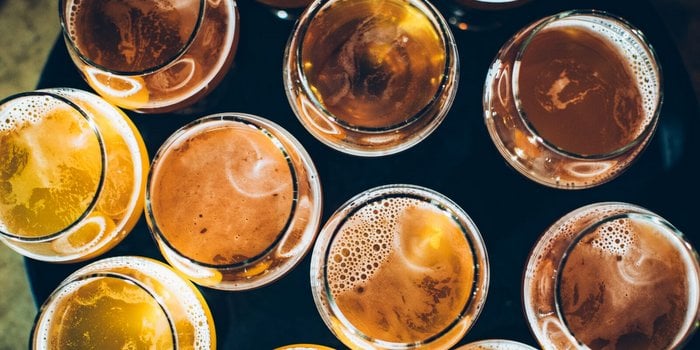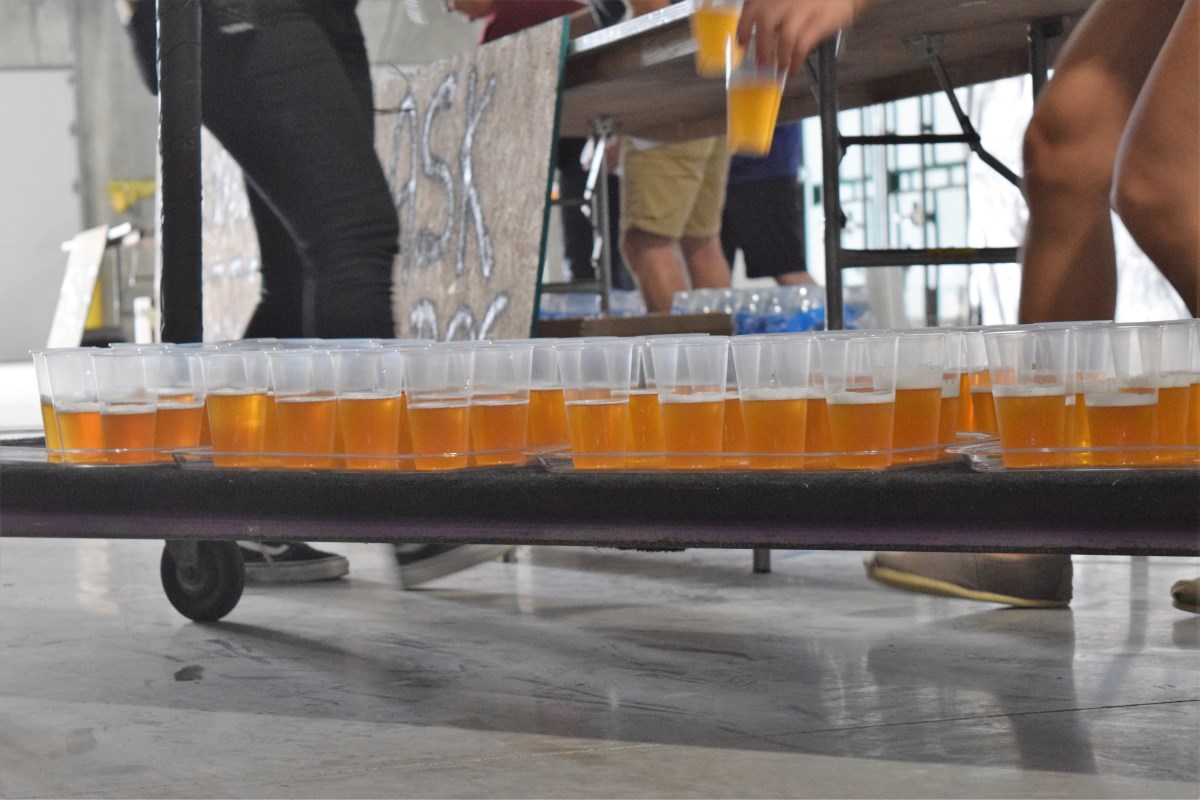Internal sensory panel tastings for craft breweries are a no-brainer. Gather up your smart beer brains and have them help you identify good and mediocre beer recipes, look for off-flavors and analyze things like bitterness, color and (my favorite) mouth feel, making sure you’re producing beers that live up to your brand’s quality halo. It’s really just an inexpensive way to evaluate your product before releasing them into the marketplace.
Most breweries will simply do a sensory tasting panel in a random room. Here‘s Amy Todd, owner and operator of Zymurgy Labs, a third-party beer testing lab who also works part-time in the lab at Zero Gravity Craft Brewery, describing her experience:
Taste is held in the brewery’s tasting room from 10-11 twice a week. Since the tasting room doesn’t open until 12, this gives everyone plenty of time to come in, evaluate up to four beers and clean up before customers come in. There’s plenty of glassware, space to spread out or sit together if we’re training, sinks for dumping extra beer and a dishwasher. It’s free from distractions, and an environment our customers will be sampling our beer in. It’s early enough that the popcorn machine hasn’t started and there aren’t too many savory aromas drifting in from the kitchen next door. Most folks have finished their coffee by then and haven’t had lunch yet which can all impact the sensitivity of their pallets.
Pretty normal, right? Well, let’s now take a look at BrewDog‘s sensory tasting room, which is maybe in Ellon, Scotland (BrewDog’s headquarters), or perhaps it’s at a secret location by the looks of it and anonymity of everyone. Watch the video above, and you’ll see how BrewDog handles its sensory panel tasting experience at corporate. Beer from the tanks are slid through hatches into a room with individual tasting booths that are completely blasted with blue light. The unidentified women in the video explains:
“The blue light disguises the color of the yellow beer, and this takes away any bias again about what the taster is drinking. People tend to drink with their eyes. If something’s a certain color, they’ll automatically think of a certain flavor. So what we’re trying to do here is take that away so that all they have is their own tasting and sensing abilities.”
Wow. Amazing setup, but not necessary for your brewery. I highly suggest you read Todd’s article “A Day in the Craft Brewery Lab, part 3: Sensory Panel Setup, Tasting Tips and the Triangle Test.” Here’s a teaser.
The following info comes directly from Amy Todd’s CBB article on sensory panel tasting. Read the whole thing right here.
Appearance
Take a look at the beer, look for color, haze, head retention, lacing. The appearance is your customers’ first impression of that beer. Does it meet true to brand expectations? You could use pictures to compare along with a description of that beer.
Smell
Some aromas are volatile and can dissipate quickly so you want to smell the beer right away. Start with a drive-by sniff as you hold your glass a few inches from your nose and smell as you pass the glass in front of you. Make some initial notes as the aroma might change a bit as the beer warms up, volatile aromas disappear, or you become anesthetized to some of the aromas.
Next take a few quick short sniffs and then a long slow one. You can cover your glass with your hand and swirl to trap some of the volatiles and then smell. Be aware of any perfumes that may be on your hands from lotion or soap.
Taste

Take about an ounce of beer in your mouth and try to coat the inside. Let it come in contact with the top and bottom of your tongue, the sides, as well as you lips, teeth and gums. Think of it as “chewing the beer.” Swallow and exhale through your nose. Note initial impressions of flavor, malt, hops, yeast, alcohol, sweetness and aftertaste. What other flavors do you notice?
Feel
Take another sip and think about the viscosity and carbonation level. High or low? Full or light body. You can think of body in terms of skim milk vs. whole milk, they feel different in your mouth. Carbonation level can play a big role in the overall impression of a beer, so much so that it’s included in style guideline descriptions. We increased our CO2 specs after repeated comments at taste of low carbonation.
Go back to the smell
See if anything has changed as the beer warms up. Note any malt, hops, yeast and fermentation byproduct aromas. Is this what you would expect for this style?
Now pull it all together and think about your overall impression. Is this beer true to brand?
Ingredient training
Next, we held some ingredient sessions. We tasted malt alongside the beers those malts went into and talked about what flavors came through in the final beer and how the flavors changed during the fermentation process. We did the same with hops and yeast (we just smelled those).
Another fun way to look at flavors is to try some of the same beer styles you make from another brewery, see how they compare and how they’re different. Sometimes it’s easier to come up with a description of your beer when you have something to compare it to.
Off-flavor training
Off-flavor training will be the biggest investment, besides time, for your sensory panel. If you’re on a tight budget, start with ingredients and true to brand descriptions for each of your beers. At some point though, you will need to actually taste and train on off flavors. Many spike kits are sold to use in one liter of beer, enough for 10-12 people. If you have a small staff, consider joining forces with another small brewery, or even some homebrewers.
When training on off flavors, always have an unspiked control beer for comparison. Use a mild beer such as an American lager during new flavor introductions. Let participants try the spike on their own without any talking. It’s important to come up with your own descriptions of the flavor without being influenced by what others experience.

After everyone has had a chance to taste, ask what everyone perceived. Some people may have recognized a flavor but couldn’t name it. Training in a group helps provide a common language to effectively communicate any problems. Share what the spike was and some common descriptions. Finally, share some causes of the off flavor and ways to prevent it. Linking the off flavors to causes and solutions in the brewery helps with understanding.
Off flavors may present differently in different beers or at different intensities so it’s important to keep training and experimenting with off flavors and different base beers and intensity levels. The more you train, the easier it will be to detect an off flavor, should you come across one in the wild.
There are plenty of places to purchase off flavor spike kits, such as Siebel, Aroxa, Weber Scientific, Flavor Active, Sigma Aldrich , Amazon and the grocery store. Kits can be purchased as a set of basic off flavors for beer, or some places will let you mix and match different flavors.
Don’t forget to train on “on” flavors as well as off flavors. If you have an off flavor you may be particularly prone to, such as diacetyl or DMS if you brew a lot of lagers, make sure you’re training on those frequently and that you have panelists who can pick those flavors out. A trained sensory panel can act as another instrument in your quality control program.
There’s lots more for sure. Jump over to Todd’s article to read it all.





Leave a Reply
You must be logged in to post a comment.